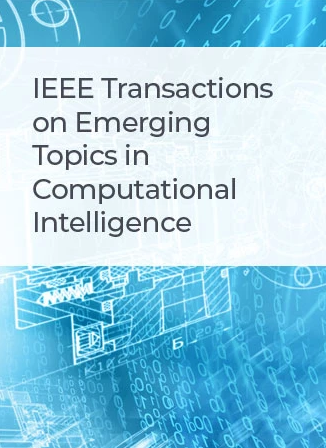Unsupervised Feature Selection via Collaborative Embedding Learning
IF 5.3
3区 计算机科学
Q1 COMPUTER SCIENCE, ARTIFICIAL INTELLIGENCE
IEEE Transactions on Emerging Topics in Computational Intelligence
Pub Date : 2024-03-11
DOI:10.1109/TETCI.2024.3369313
引用次数: 0
Abstract
Unsupervised feature selection is vital in explanatory learning and remains challenging due to the difficulty of formulating a learnable model. Recently, graph embedding learning has gained widespread popularity in unsupervised learning, which extracts low-dimensional representation based on graph structure. Nevertheless, such an embedding scheme for unsupervised feature selection will distort original features due to the spatial transformation by extraction. To address this problem, this paper proposes a collaborative graph embedding model for unsupervised feature selection via jointly using soft-threshold and low-dimensional embedding learning. The former learns a threshold selection matrix for feature weighting in the original space. The latter extracts embedded representation in low-dimensional space to reveal the latent graph structure. By collaborative learning, the proposed method can simultaneously perform unsupervised feature selection in the original space and adaptive graph learning via dual embedding. Extensive experiments on five benchmark datasets demonstrate that the proposed method achieves superior performance compared to eight competing methods.通过协作嵌入学习进行无监督特征选择
无监督特征选择在解释性学习中至关重要,但由于难以建立可学习的模型,无监督特征选择仍具有挑战性。最近,图嵌入学习(graph embedding learning)在无监督学习中受到广泛欢迎,它可以根据图结构提取低维表示。然而,这种用于无监督特征选择的嵌入方案会因提取时的空间变换而扭曲原始特征。针对这一问题,本文提出了一种协同图嵌入模型,通过联合使用软阈值和低维嵌入学习来实现无监督特征选择。前者在原始空间中学习用于特征加权的阈值选择矩阵。后者提取低维空间中的嵌入表示,以揭示潜在图结构。通过协作学习,所提出的方法可以同时在原始空间中进行无监督特征选择,并通过双重嵌入进行自适应图学习。在五个基准数据集上进行的广泛实验表明,与八种竞争方法相比,所提出的方法取得了更优越的性能。
本文章由计算机程序翻译,如有差异,请以英文原文为准。
求助全文
约1分钟内获得全文
求助全文
来源期刊

IEEE Transactions on Emerging Topics in Computational Intelligence
Mathematics-Control and Optimization
CiteScore
10.30
自引率
7.50%
发文量
147
期刊介绍:
The IEEE Transactions on Emerging Topics in Computational Intelligence (TETCI) publishes original articles on emerging aspects of computational intelligence, including theory, applications, and surveys.
TETCI is an electronics only publication. TETCI publishes six issues per year.
Authors are encouraged to submit manuscripts in any emerging topic in computational intelligence, especially nature-inspired computing topics not covered by other IEEE Computational Intelligence Society journals. A few such illustrative examples are glial cell networks, computational neuroscience, Brain Computer Interface, ambient intelligence, non-fuzzy computing with words, artificial life, cultural learning, artificial endocrine networks, social reasoning, artificial hormone networks, computational intelligence for the IoT and Smart-X technologies.
 求助内容:
求助内容: 应助结果提醒方式:
应助结果提醒方式:


